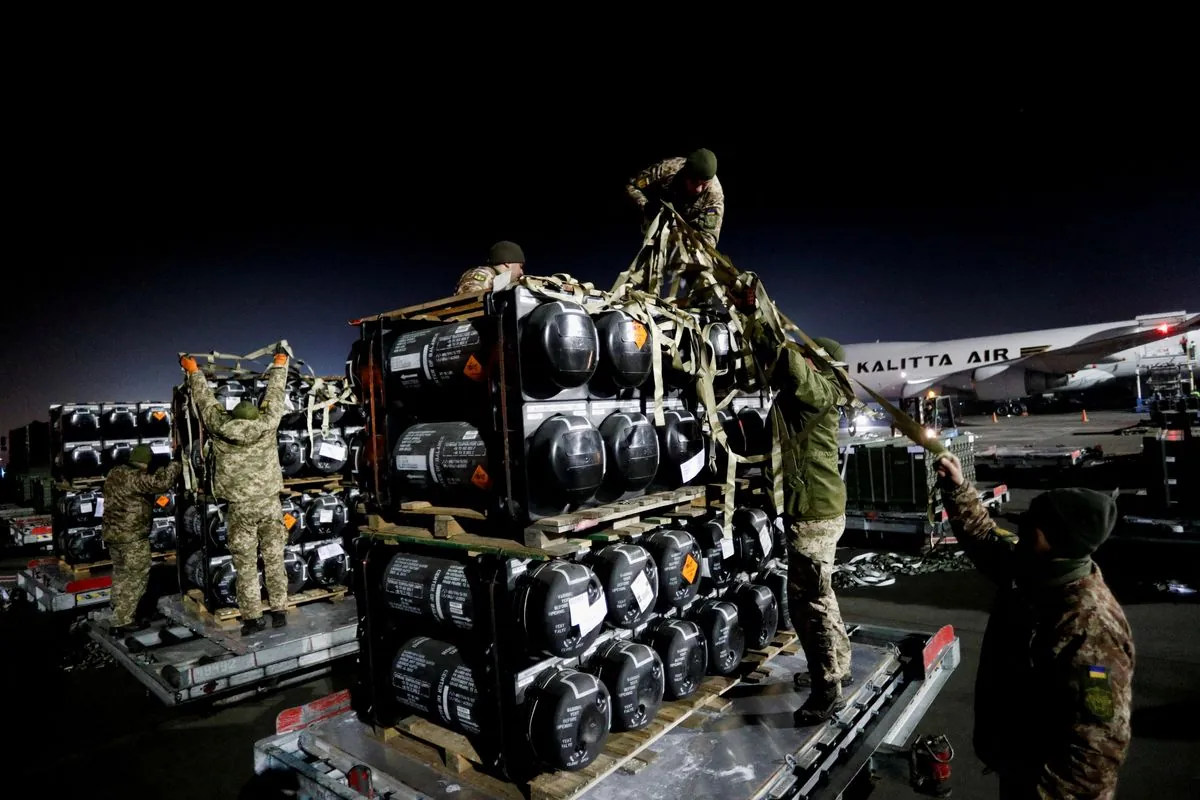The United States' approach to the conflict in Ukraine has been characterized by a cautious strategy of escalation management. This approach, while aimed at preventing a wider war, has faced increasing criticism for potentially prolonging the conflict and limiting Ukraine's ability to defend itself effectively.
Joe Biden's administration has consistently sought to keep the war contained within Ukraine's borders, providing diplomatic, economic, and security assistance while avoiding direct involvement of US or NATO forces. This strategy is reminiscent of a dialogue from the 2006 film "The Good Shepherd," where a CIA officer claims to "make sure the wars are small ones." However, the reality of the situation in Ukraine suggests that this approach may be falling short of its intended goals.
The US has provided over $75 billion in assistance to Ukraine since the Russian invasion began 2.5 years ago. Despite this substantial aid, there have been significant delays and hesitations in delivering certain types of weapons and authorizing their use. For instance, the delivery of longer-range missiles and combat aircraft has been subject to prolonged deliberations.
One of the most contentious issues has been the restrictions placed on Ukraine's use of Western-supplied weapons against targets within Russia. While some European allies, including the UK and France, have advocated for allowing Ukraine to use weapons like Storm Shadow and SCALP cruise missiles against Russian military targets, the US has maintained a more cautious stance.
The US position has evolved slowly over time. Initially, Ukraine was only permitted to fight within its borders and at rocket-launcher range. Later, deep-strike capabilities were allowed, but only against targets within Ukraine, including Crimea. More recently, short-range strikes into Russia's border regions have been permitted, but deep strikes remain prohibited.
This gradual relaxation of restrictions has been criticized as too slow and detrimental to Ukraine's defense efforts. As Gabrielius Landsbergis, Lithuanian Foreign Minister, pointed out:
The US approach has also been questioned in light of Ukraine's successful drone strikes on Russian oil refineries and the brief occupation of Russia's Kursk region, neither of which led to significant escalation from Russia.
Critics argue that the current US strategy fails to adequately address the air war aspect of the conflict. Russian airstrikes on Ukrainian energy infrastructure and cities pose a significant threat, yet US assistance in air defense and fighter jet provision has been limited.
Some experts propose a shift from escalation management to a "threat removal" strategy. This would involve allowing Ukraine to conduct deep strikes into Russia using all available means, targeting Russian launch capabilities and military infrastructure. The goal would be to demolish the means Russia uses to attack Ukraine, rather than trying to manage a gradual escalation.
This new approach would align with a revised framing of the war's objectives. Instead of aiming to keep the conflict small, the focus would be on ensuring Russia feels both beaten and deterred from future aggression. This would require deepening support for Ukraine to liberate all its territory, including Crimea and the Donbas, and establishing a lasting deterrent against Russian aggression.
As the conflict enters its third year, the need for a reassessment of US strategy becomes increasingly apparent. The current approach, while well-intentioned, may be prolonging the conflict and increasing risks for both Ukraine and the West. A shift towards a more proactive strategy of threat removal could potentially lead to a quicker resolution and a more stable long-term peace in Europe.
